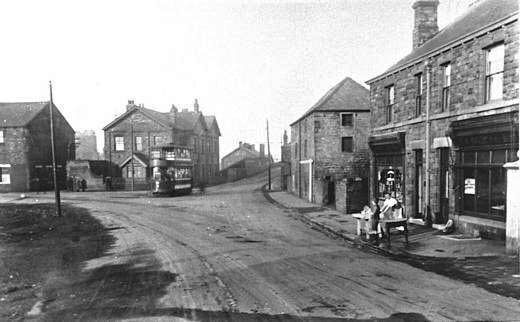Canklow
Canklow was a small hamlet in the parish of Whiston.
Bromley Sands, 1854
 Westgate,to the north, was a good residential district, the gardens of many of the houses running to the bank of the River Rother. At the bottom of Water Lane, pleasure boats were let out on hire by Geo. Thompson. The water was clear and also suitable for bathing, Bromley Sands was the popular place. The banks were green with small trees, there was shade on hot summers days.
Westgate,to the north, was a good residential district, the gardens of many of the houses running to the bank of the River Rother. At the bottom of Water Lane, pleasure boats were let out on hire by Geo. Thompson. The water was clear and also suitable for bathing, Bromley Sands was the popular place. The banks were green with small trees, there was shade on hot summers days.
People and Places

Canklow, 1854

Until the sinking of Rotherham Main Colliery, there were few houses.
Canklow Mill, 1854 
On 5 Jul 1783 John Taylor of Canklow Mills was given the lease for 99 years. Canklow House and Canklow Mill House are noted on a map dated 1854. John Jackson was proprieter of Canklow Mill. Source Pigot and Co.'s Royal National and Commercial Directory and Topography of the Counties of York, Leicester & Rutland, Lincoln, Northampton and Nottingham, 1841, DateBand 1750-1850
Slater's Commercial Directory of 1855, lists Thomas Hopwood as a Corn Factor at Canklow Mills.
Chas Garfit was Corn Miller in 1862 - Directory & Topography of Sheffield, 1862
The Sheffield Directory of 1856 lists a George Moorhouse as a Corn Miller at Canklow Mills.
In 1858 the Duke of Norfolk granted lease of land with Cornmill attached, called Canklow Mill, with the Old Drying Kiln, 5 messuages, cottages, smith's shop to Charles Garfit of Dunlee, co. Cork., at a rent of £85
In the 1869 directory George Appleyard was recorded as of Canklow Mill.
By 1901 Castle Avenue and Warden Street had been established on Canklow Lane - now called Canklow Road. Canklow Terrace was built for the mining deputies and undermanagers on West Bawtry Road, on land behind Canklow House, which had been built in 1767 by John Platt for a J. Taylor
In 1854 John Bartholomew Rotheram, a millwright and machine maker lived at Canklow House.
Looking at the 1891 census, the residents of Canklow Hall were John Shore, a colliery Engine Wright, and family. The occupants of Canklow Mill House were Isaac Ford, Colliery Manager, and his family.
Also noted as living in Canklow were: Thomas Dobson, Colliery Horsekeeper Henry Platts, Foreman Carpenter

There were also six families living at Old Mill , this was an area nearer to Whiston.
Bentley's Old Brewery, Canklow Road, Rotherham, was demolished in 1965.
Colliery Disaster of 1891
A terrible mining accident occurred at Canklow in the summer of 1891, when eight men, without warning, were precipitated from a wooden platform in the shaft to the bottom, some sixty feet below. Two of them had miraculous escapes. One man named Drabble, during his descent came in contact with a large hook dangling on one of the chains supporting the platform, which tore into his leg, he refused assistance until others had been attended to. A Night foreman named Clarke, behaved nobly in his attempt to rescue the men. As a result, both men were acknowledged for their heroism and awarded the Albert Medal for saving life. Source: Times Newspaper
Canklow Wood
 Canklow is bordered on the east by Canklow Woods and Boston Park
Canklow is bordered on the east by Canklow Woods and Boston Park
Designated an ancient woodland, belonging to the 7th Earl of Shrewsbury, from between 1598 and 1616, and then the Dukes of Norfolk ; the wood is of national importance for archaeology as the summit and eastern edge of the site has the remains of a settlement that was occupied from the Bronze age through to early Roman times.
Excavations in 1947 uncovered the site of a possible Romano-British enclosed (D-shaped?) settlement containing Hut circles, possible clearance cairns or cemetery. Fragments of pottery found from the 1st and 2nd centuries.
Yorkshire Archaeological Society archive MS20/8: - Tyson excavated a section across the North rampart.
In 1949 an excavation of a mound was poorly recorded and may represent the remains of a barrow. Copley's survey notebook is at Rotherham Museum, along with surveys of the site dated 1947.
Canklow Woods were destroyed by firewood collectors during the General Strike, but still remains an open space, the woodland gradually regenerating
Sheffield Archives have an unpublished thesis "'Canklow Wood' - A Preliminary Statistically Based Study" by John Preston
Rotherham Archives hold personal research papers by F. L. Preston entitled Stones in Canklow Woods 1976
